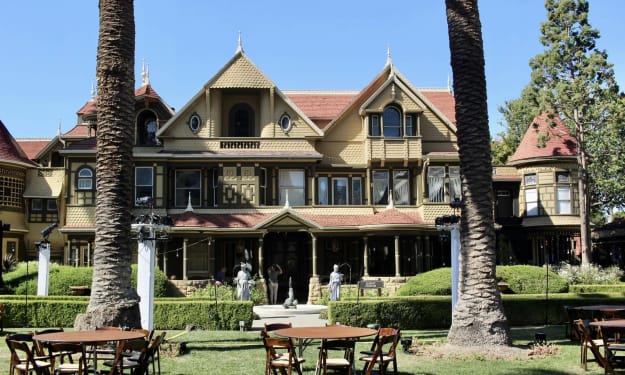

Moroccan history is a rich and diverse tapestry that spans several millennia. The region that is now modern-day Morocco has been inhabited since prehistoric times, and over the centuries, it has been influenced by various civilizations, including indigenous Berber tribes, Phoenicians, Romans, Vandals, Byzantines, and Arabs. Here is a brief overview of key periods in Moroccan history:
Ancient History:
Prehistoric Period: The region of modern-day Morocco was inhabited by Berber tribes since prehistoric times. Cave paintings and archaeological sites provide evidence of early human settlements.
Phoenician and Carthaginian Influence: Phoenician traders established trading posts along the Moroccan coast around the 12th century BCE. They were later succeeded by Carthaginians, who founded the city of Carthage (present-day Tunisia) and maintained influence in Morocco until their defeat by the Romans.
Roman Influence:
Roman Province of Mauretania Tingitana: The Romans conquered parts of present-day Morocco in the 2nd century BCE. They established the province of Mauretania Tingitana, with its capital at Tingis (present-day Tangier). Roman influence brought urbanization, infrastructure development, and the spread of Christianity.
Islamic Period:
Arab Conquest: In the 7th century CE, Arab armies led by Uqba ibn Nafi conquered the region, introducing Islam. Arab-Berber dynasties emerged, such as the Idrisids and the Almoravids, who played significant roles in shaping Moroccan history.
Almoravid Empire: The Almoravids, a Berber dynasty, founded an empire that extended from Morocco to parts of Spain and West Africa. They were known for their religious fervor and their efforts to unify Muslim territories.
Medieval Dynasties:
Almohad Empire: The Almohads, another Berber dynasty, emerged in the 12th century. Under their rule, they expanded their empire and introduced significant architectural and cultural developments, including the construction of the famous Koutoubia Mosque in Marrakech.
Marinid Dynasty: The Marinids, a Berber dynasty, ruled Morocco from the 13th to the 15th century. They were known for their patronage of the arts, promotion of trade, and the construction of impressive architectural structures.
Colonial Era:
European Influence: In the late 15th century, European powers, including Portugal and Spain, began establishing trading posts and fortifications along the Moroccan coast. In the 19th century, France and Spain gained control over large parts of Morocco, leading to a period of colonization.
French Protectorate: In 1912, Morocco was divided into French and Spanish protectorates, with France having the larger portion. The French implemented administrative and economic reforms but faced resistance from the nationalist movement.
Independence and Modern Era:
Independence Movement: The struggle for independence from French and Spanish control intensified after World War II. The nationalist movement, led by figures like Muhammad V, demanded full independence for Morocco.
Independence and Post-Colonial Era: Morocco gained independence from France and Spain in 1956. Muhammad V became the country's first king, and later, his son Hassan II succeeded him. Morocco has since undergone political, social, and economic transformations, embracing modernization while preserving its cultural heritage.
Moroccan history is a rich and diverse tapestry that spans several millennia. The region that is now Morocco has been inhabited since prehistoric times, and it has been shaped by numerous civilizations, including indigenous Berber tribes, Phoenicians, Romans, Vandals, Byzantines, and Arabs. Here is a brief overview of key periods and events in Moroccan history:
Ancient Times: The area was inhabited by Berber tribes, who established several powerful kingdoms, such as the Mauretanian kingdom and the Numidian kingdom. The Phoenicians established trading posts along the coast, and the Romans eventually conquered the region, establishing the province of Mauretania Tingitana.
Arab Conquest: In the 7th and 8th centuries, Arab armies led by the Umayyad Caliphate invaded North Africa and brought Islam to the region. They established the first Islamic state in Morocco and founded the city of Fes. The Idrisid dynasty, of Arab-Berber origin, ruled over the region from the 8th to the 10th century.
Almoravids and Almohads: The Almoravid dynasty emerged in the 11th century, founded by a Berber religious leader named Abdallah ibn Yasin. They expanded their empire across Morocco and into Spain. The Almohad dynasty, founded by another Berber religious leader named Ibn Tumart, succeeded the Almoravids in the 12th century. The Almohads established a vast empire that included much of North Africa and parts of Spain.
Marinid Dynasty: The Marinid dynasty, of Berber origin, ruled over Morocco from the 13th to the 15th century. They established Fes as their capital and played a significant role in shaping Moroccan art, architecture, and culture. During their reign, trade and cultural exchange flourished, and several great mosques and madrasas were built.
Portuguese and Spanish Influence: In the 15th century, Portugal and Spain began exploring and colonizing parts of Morocco's coast. The Portuguese established several trading posts along the coast, and Spain gained control over territories such as Ceuta and Melilla. Moroccan resistance to European colonization led to numerous conflicts and wars.
Saadian and Alaouite Dynasties: The Saadian dynasty emerged in the 16th century and managed to unify Morocco after years of internal conflicts. Under the reign of Sultan Ahmad al-Mansur, the Saadian dynasty reached its peak, with significant achievements in architecture and trade. The Alaouite dynasty, which still rules Morocco today, came to power in the 17th century and has continued to govern the country for over three centuries.
French and Spanish Protectorates: In the late 19th century, Morocco became the target of European imperial ambitions. France and Spain established protectorates over different regions of Morocco in 1912. The country experienced a period of colonial rule, marked by resistance movements and nationalist sentiment.
Independence and Modern Morocco: Morocco regained its independence from France and Spain in 1956. Sultan Mohammed V became the country's first king, and he was succeeded by his son, Hassan II, in 1961. Since then, Morocco has undergone significant economic and social development, embracing political reforms and promoting tourism and foreign investment.
Morocco has a vibrant cultural heritage that blends Arab, Berber, and European influences. The country's historical sites, such as the medinas of Fes and Marrakech, the Roman ruins of Volubilis, and the kasbahs of the Atlas Mountains, attract visitors from around the world
About the Creator
Victor M
I am a self-taught content creator who has been passionately creating engaging and informative content for more than 5 years. With a unique perspective on the world around me, my content covers a wide range of topics.






Comments
There are no comments for this story
Be the first to respond and start the conversation.